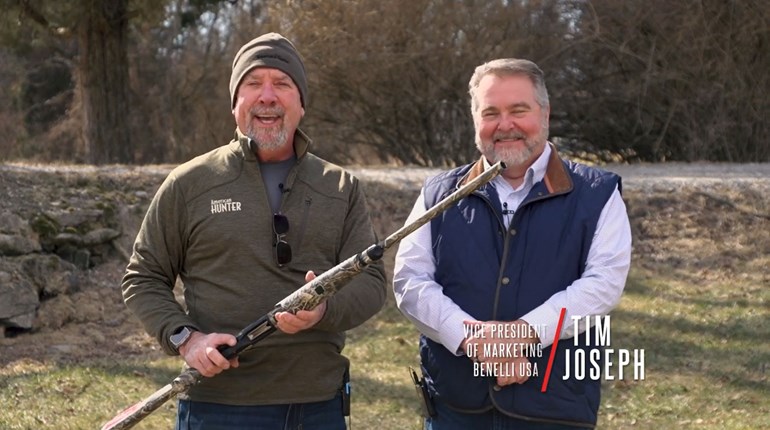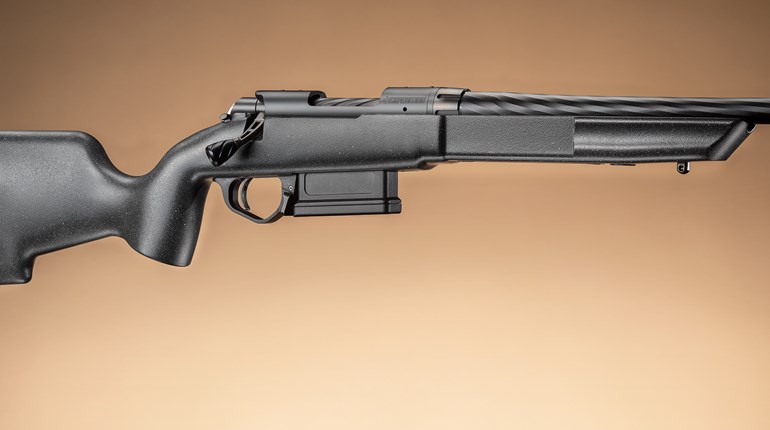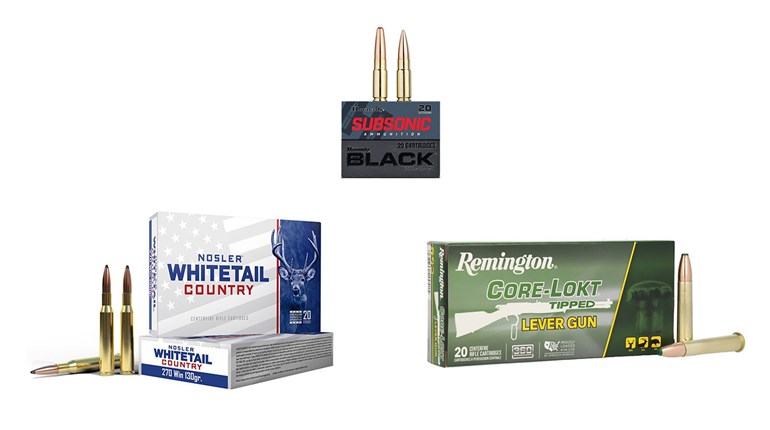
My first rifle was a Winchester Model 94. Millions of deer hunters can likely say the same thing. The Model 94 is the quintessential deer gun; more than 7 million of these iconic lever-actions (including the original Model 1894 version) have been produced by Winchester Repeating Arms Co., and a couple other manufacturers under the Winchester brand, during the rifle’s storied history.

The Model 94 is nearly synonymous with the .30-30 Winchester cartridge. It was the first rifle to be chambered for America’s first commercially successful smokeless powder centerfire round, which at the time of the marriage in early 1895 was called the .30 Winchester Center Fire. It’s widely accepted that the .30-30 Winchester, whether that refers to the gun or the cartridge, has accounted for more venison than any other rifle or round ever fired at a deer. That tally will continue this season, especially in the East and the upper Midwest, where the “Winchester .30-30” is still as common in deer camp as red plaid.
Currently five versions of the Model 94 are manufactured by Miroku in Japan for Winchester Repeating Arms. The Model 94 Sporter is a long-barreled rifle that goes heavy on tradition and nostalgia. It’s available in not only .30-30, but also .25-35 Win., .32 Win. Spl. and .38-55 Win. The .38-55 was one of the original 1894 chamberings; the .25-35 was offered a year later along with the .30-30 and quickly faded into the shadow of its .30-caliber cousin.

Much like the 94s of yesteryear, the Sporter’s 24-inch barrel has a profile that starts as an octagon and then becomes round just ahead of the fore-end. A full-length tubular magazine that holds eight rounds parallels the half-round/half-octagonal barrel, and the fore-end terminates in a blued-steel cap. There’s more steel on the buttstock in the form of a crescent-shaped buttplate. It follows the style of early Model 94 rifles, when hunters were more concerned about making meat for the winter than feeling the bite of recoil. The shape does fit nicely in the shoulder pocket, but just make sure the steel is against the shoulder and not the collarbone before firing.
The walnut buttstock has a straight grip, bordered 22-line-per-inch checkering and a low, sloping comb that’s best suited for shooting with iron sights. And of course the 94 Sporter comes with a good set of irons. The base of the semi-buckhorn rear sight is drift-adjustable in its dovetail for windage, while a notched elevator slides forward or backward to adjust the sight blade’s elevation. The front sight from Marble Arms presents a brass bead that sits atop a tapered and serrated post.
Since the 94 Sporter ejects cartridges from the top of the receiver at an angle—a change Winchester made to the action in the early 1980s—it’s compatible with a riflescope. The receiver is drilled and tapped for a set of bases.

The 94 Sporter has several other modern touches worth noting. The traditional half-cock safety has been replaced with a rebounding-hammer safety that prevents the hammer from moving forward and contacting the firing pin unless the trigger is pulled and held to the rear. Instead of coming to half-cock when lowered under the thumb, the hammer now stops at the rebound position, which looks similar but ensures the hammer will not slip forward to hit the firing pin. In addition, the 94 Sporter has a manual hammer-block safety located on the tang. With the hammer cocked, the safety’s slider must be pushed forward in order to fire the rifle. The hammer is also drilled and tapped for a knurled extension, which makes manipulating it easier with a scope aboard.
Even though I took the Model 94 Sporter to a lever-gun class at Gunsite Academy, where I wanted to shoot well, and plan to hunt with it this fall, when I want to hang something from the meatpole, the traditionalist in me wouldn’t permit a scope on such a streamlined beauty. Instead, I mounted an adjustable rear aperture from Skinner Sights on the receiver and paired it with a solid brass post-style front sight. (I removed the semi-buckhorn rear sight and replaced it with a dovetail blank from Skinner that’s ingeniously threaded to hold the aperture insert; removing the insert makes the rear sight more like a ghost ring for fast shooting in close cover.)

With practice the setup is surprisingly effective beyond the typical distances at which most whitetails are taken in the East. During accuracy testing, most 100-yard groups were less than 3.5 inches. Although the rifle is capable of better accuracy—add a scope or someone more skilled at shooting with irons—it satisfies the old-school deer hunter in me. Between the course at Gunsite and accuracy testing, I put close to 400 rounds through the rifle and never had a hang-up.
While the Model 94 Sporter is toward the top end of deer rifles in terms of price, many deer hunters will agree it’s toward the top in terms of looks and handling as well. It’s fast, reliable, accurate enough to put a buck on the ground and made with a quality that assures it will be passed among generations.

Technical Specifications
• Type: lever-action centerfire rifle
• Caliber: .25-35 Win. .30-30 Win. (tested), .32 Win. Spl., .38-55 Win.
• Barrel: 24″; half-round/half-octagonal contour; 6 grooves, 1:12″ RH twist
• Magazine: tubular; 8-rnd. capacity
• Trigger: single-stage; 5.8-lb. pull weight
• Safety: tang-mounted slide
• Sights: adjustable semi-buckhorn rear, Marble Arms post w/brass bead front; receiver drilled and tapped for optics
• Stock: straight-grip Grade 1 black walnut w/satin finish; LOP 13.5″
• Metal Finish: blued
• Overall Length: 42.5″
• Weight: 7.5 lbs.
• MSRP: $1,399.99; winchesterguns.com


































